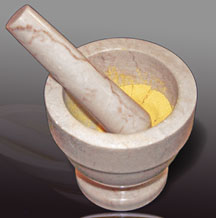Hermes2020
Well-known member
- Messages
- 1,408
I would love to hear any comments and suggestions on the choice of primaries. This video is an excellent introduction to the subject.
Glad I'm not the only one who's done that.The trick I use to find the true complementary of a certain colour is to stare at the colour for at least a minute without moving my eyes, then I look at a white wall. The complementary will show very clearly as a patch against the wall.
Glad I'm not the only one who's done that.
If you want pigment information for any brand of paint, you can find it on dickblick. Select the color you want to investigate, click View Product Details, then click View Pigment Information.I found these colors to be accurate in the context of warm / cool. I use these colors ( pigments) most of the time, just not Old Holland brand. The Manganese blue is probably Phalo (PB 15), or a multi pigment blend as OH is noted for all there elaborate and expensive colors.
It would have been more helpful if the presentation included the actual pigment designations instead of just Old Holland color names.
Cadmium Yellow Medium and Cadmium Lemon are both PY 35. The coolness of Cad Lemon is due to the processing. They do have very different mixing characteristics. The cooler blue and cooler yellow will mix to give more satuated colors, very important IMO.
Bismuth Yellow (PY 184) is a close substitute for Cad Lemon.
Blues drive me batty in their consistency and behavior. I usually use Ultramarine (PB 29) for the warmer blue and Phthalocyanine blue (PB 15) for the cooler, commonly named cyan. Phthalocyanine seems to be another pigment that varies alot between MFGS.
I have spent many hours on this site and have learned a great deal about color.Not sure if this is a color theory question or not, but just in case it is, this guy is a goldmine for the science behind it (and why conventional artist's color theory never made any freaking sense to me).
Seconded. I discovered that site when I started dabbling in watercolor. It's very good.Not sure if this is a color theory question or not, but just in case it is, this guy is a goldmine for the science behind it (and why conventional artist's color theory never made any freaking sense to me).
If you want pigment information for any brand of paint, you can find it on dickblick. Select the color you want to investigate, click View Product Details, then click View Pigment Information.
I have spent many hours on this site and have learned a great deal about color.

Thank you very much. Something useful I learned today!This video explains well what I mean:
Thank you very much. Something useful I learned today!
